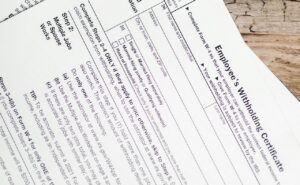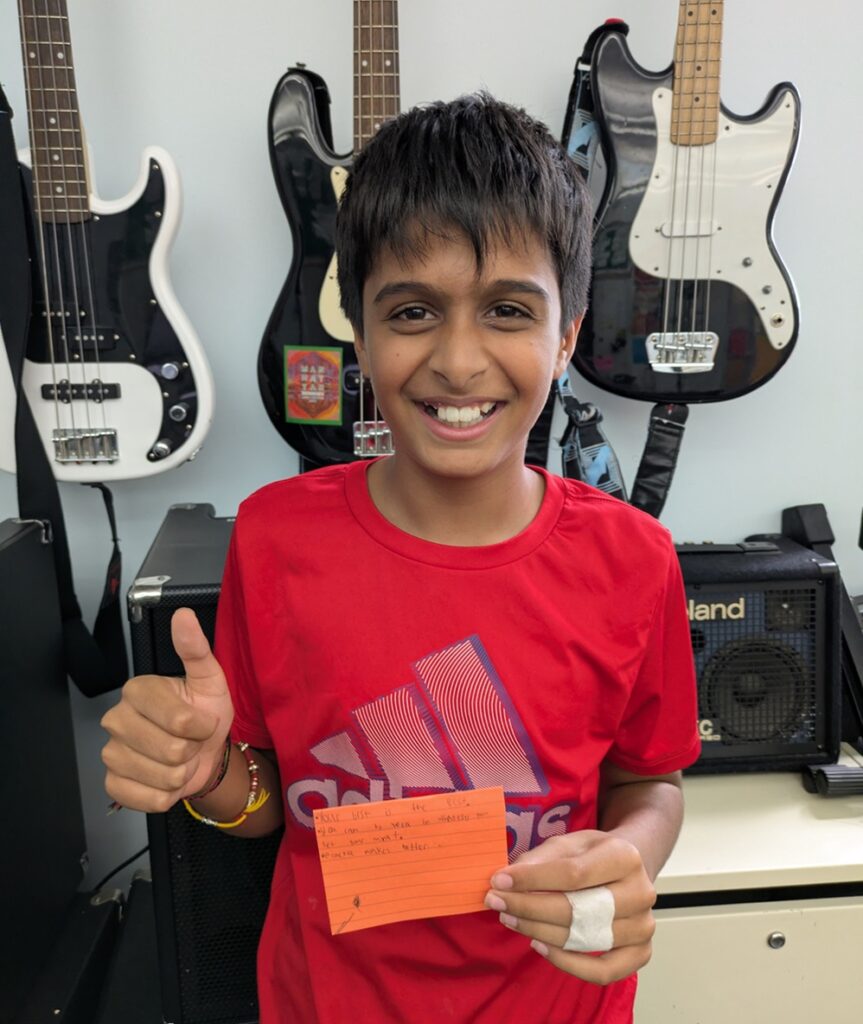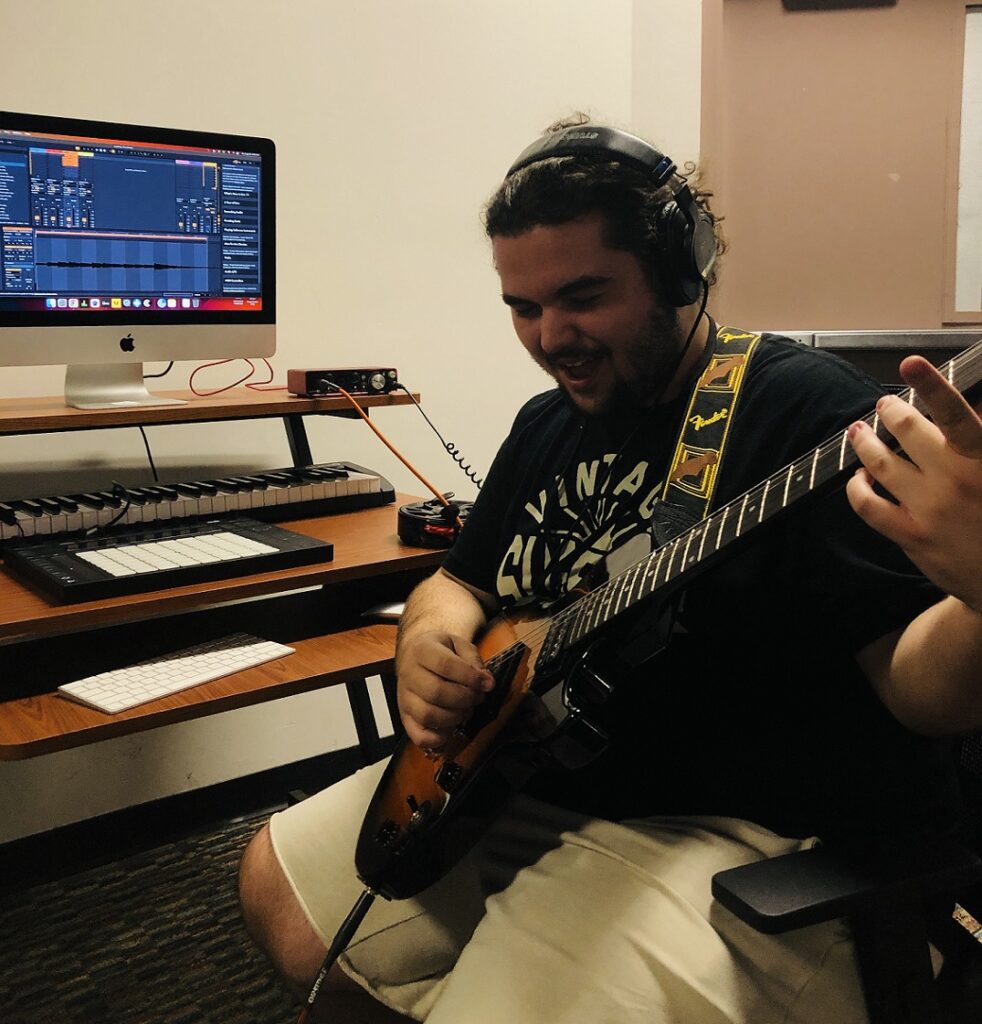Tagged Under:
How to Start a Summer Music Camp
To successfully launch a summer camp, you must start planning at least a year in advance.
Summer offers a much-deserved reprieve from the stresses and demands of the school year for teachers and students. Even though we all look forward to the time off, it’s important to consider what musical opportunities are available to our students. Often, music ensembles provide a vital sense of community and belonging for many students, and it can be easy for students to feel isolated from that community during the summer. Furthermore, many students lack the drive or discipline to dust off their instrument case and play every now and then throughout the summer, and they return to school in the fall feeling rusty and out of practice.
A summer music camp can be a fantastic way to keep students engaged in their music community, assist them in building relationships with new students and teachers, and provide them with a musical outlet that not only helps them keep up their chops over the summer but allows them to continue to use music as a source of self-expression and enjoyment.
The IMPACT! Middle School Summer Band Camp is in its third year in Williamson County, Tennessee, and attracts roughly 180 students from schools across the county. Although the camp has only been held for a few years, our team has developed a robust foundation for what the camp is and how it is run. This article will provide tips on what to consider if you are planning to start a summer camp as well as a timeline of tasks as camp approaches.

Before You Start
First, consider a few basic, yet essential, details about your camp. Then you can proceed with the nuts and bolts of getting your camp started.
Why do you want to have a summer camp? What kind of experience do you want to create? What will be the main focus of your camp? Will it be sectional based, concert-band based or a mix of both? What about jazz or chamber music? Is it important for students to have ample social opportunities, recess or games? You must decide what experiences are most relevant for the students who will attend the camp (more information on that below). Every band program and area of the country is different, and there is not a one-size-fits-all approach that will work for everyone. Build your camp around the types of programs you have in your area, and on what you and your colleagues value in music education.
What facilities are available to host the camp? There are several factors to consider when choosing a facility for your camp. Regardless of what kind of camp you’re planning and how many students you anticipate, the space and location of your facilities will potentially determine or limit your options. You must have a space large enough to hold all campers for announcements and other camp-wide activities. You likely will need several smaller areas for “break out” sectionals or activities. Other helpful spaces include a cafeteria or designated area for meals, a performance space (if you plan to present a performance), a gymnasium for indoor-recess time, and a camp headquarters area equipped with a copy machine and similar office essentials. Ideally, all these spaces should be centrally located or in a similar section of the building or school. If you use a school campus, many districts will place restrictions on which students are allowed to participate in campus activities due to insurance limitations or similar concerns. Make sure you know what these policies are and take them into account as you decide which facility to use.
Which students will be eligible to register for camp? This depends on what kind of experience you plan you create. Is your camp for students who are new to their instruments, or students with experience? Is the camp for middle school or high school students or both? Once you know this, you’ll be able to define which grade levels and experience levels you will invite to your camp. You must also clearly define which schools’ and/or school districts’ students will be allowed to participate. The main concern here is related to insurance and liability concerns because some districts’ insurance only applies to students who are zoned to attend schools within that district.
When will you hold your camp? Be aware of other student opportunities in your area during the summer (athletic organizations, church groups, etc.) to avoid scheduling conflicts. It’s also important to consider when area high school bands might be holding their summer marching band rehearsals, as this may impact your ability to hire staff and instructors for your camp. Avoid the weeks before and after Independence Day and Memorial Day because many families travel during those times.
What is the budget for your camp? Will you charge students to attend? Do you plan to pay your staff? The answers to these questions will vary from situation to situation, but it is strongly recommended that you compensate your staff members (and yourself!). Nobody wants to work for free, particularly those high-quality individuals who you want to work with your students! Because you’ll need to pay your staff, you will likely need to charge students a registration/tuition fee. Investigate what similar camps in your area charge for tuition and charge a comparable rate. Also consider what other expenses you may incur. Will you provide T-shirts for students? What about lunch? How much will the facilities cost? Get these answers before you determine how much you will charge for camp. I collaborated with school district officials to determine the budget for the camp, including how much each staff member would be compensated and what expenses were covered.

Six Months Before Camp
Reserve facilities: Make a list of all the spaces you will need during camp and find a location that best serves your needs. Search in locations that are central to the students who will be eligible to attend. Be ready to communicate the dates/times you will need the facilities (make sure to account for set up and tear down time!), as well as a list of spaces you’ll need to reserve. Complete the necessary paperwork and obtain the necessary signatures to finalize your reservation.
Complete paperwork with your school district: This might include facilities paperwork (if you are hosting the camp on school property) and fundraising approvals (to collect registration fees). It is also important to make school administration aware of your plans so they are not caught off guard by requests for paperwork.
Outline a list of staff positions you will need: These might include conductors, ensemble chairs, sectional staff, a camp nurse and others. Remember, you will need assistance during lunch and recreational time to monitor the students and lead activities, so, you must decide if the sectional staff or conductors will be responsible to help during these times in addition to their teaching responsibilities. It may be helpful to designate some staff members as “counselors” for this purpose. Depending on who you hire to work for your camp, you may not want to ask them to complete these tasks (for example, if you’ve hired the principal flutist of your local symphony to work with students, you probably don’t want to ask her to also supervise students while they eat lunch).
Become familiar with the onboarding procedures your school district has for hired staff: Each district has different procedures, but you can generally expect that staff will be required to have a completed background check on file, in addition to some kind of payment/compensation form to record their hours worked, a tax form (likely a W9) and other forms required by your district. It is your responsibility to know the details of these processes, communicate expectations clearly to your staff and ensure that they are followed.
Reach out to the bookkeeper/treasurer of whichever organization you will be running funds into and out of (likely your school, but possibly a local music educators association): It’s essential to communicate with them regarding collecting registration fees, disbursing staff payments and covering all expenses you may have during your camp. The band directors in our county have an association that houses funds for certain county-wide events — so, we ran the camp finances through that association. Because of this, we did not have to apply for grants or do any special fundraising to get the camp started.

Five Months Before Camp
Begin to gather copies of the documents that your staff must complete for onboarding: Create folders on your computer to keep things organized, and create a spreadsheet to track everything. Save blank copies of these forms for convenience.
Begin to create the documents that will serve as the “infrastructure” for your camp: These might include:
- A Camp Registration Form: This is how you will collect information about the students who register for your camp. A Google form is a convenient option. Provide as much information about the camp as possible at the beginning of the form. Collect the following information: student’s legal name, student’s grade, parent/guardian name/email/phone, home address, emergency contact name/phone number; relationship of emergency contact to the student, school student attends, student’s instrument and student T-shirt size. You may also want to provide a media release statement allowing the school district to publish photos, videos and other media that may be taken at the camp.
- A Camp Budget Spreadsheet: This is how you will track how much money the camp brings in and all the expenses the camp incurs, including staff compensation. List the names and roles of all staff, their employee status, whether they have completed onboarding and the amount they’ll be paid. Create formulas for the total amount spent on staff payments and populate it into a column that lists all camp expenses. Also create formulas for the amount of funds the camp brings in depending on how many students register. This will allow you to keep track of all aspects of the budget easily.
- A “Save-the-Date” Flyer: Even though you may not be ready to open registration at this point, it’s important to advertise the camp and get the word out. Many people travel during the summer or send their kids to other camps, so it’s important to get your camp on your community’s radar sooner rather than later. The flyer should be colorful and include only the most important information about camp: when and where it will be held and which students are eligible to register and attend. Share this flyer with all the school music teachers whose students will be eligible to attend.
- An Email Advertising the Camp to Potential Campers and Their Families: Prepare to get the word out! This email will likely be long because you want to provide as much information about the camp as possible to attract as many students as you can (and avoid potential questions!). Include the date, location and time that the camp will be held, as well as a brief overview of what students might expect from the camp. Include information about how to register and pay camp fees. Share this message with school music teachers and private tutors in your area and ask them to forward it to their students’ families.
- A Camp Logo to Help Advertise and Brand your Camp: Design a logo that is unique but simple and recognizable. You will be able to put this on camp documents, fliers, shirts and other items.

Four Months Before Camp
Open registration! Now that all the essential details of your camp have been established, share the information with the teachers of eligible students and ask them to forward it. Collect registration fees. If your school district has a platform to collect fees and payments online, utilize it.
Begin to formulate the daily schedule for your camp: This will largely depend on what you have decided will be the focus of your camp. If your camp will be concert-band focused, you will need a balance of sectional and full ensemble time. If your camp is chamber-music focused, you must schedule individual practice time and coaching sessions. If your camp is jazz focused, you’ll need time with full ensemble and sectional instructors as well as improvisation lessons or music theory. Students will need time to transition between activities, younger students will need “brain breaks” or recreation time, and students should have at least 30 minutes (or longer) to eat lunch.
Begin to reach out to potential staff members for your camp to see if they are interested and available to help: Talk to music teachers at local schools, local private teachers, members of your local professional music education association, retired music teachers, or members of local community orchestras or bands. Be prepared to communicate what their role with the camp will be, the dates and times you’ll need them to teach, and the compensation you have budgeted. Once you receive confirmation from them, forward them any and all information and onboarding paperwork required by your district. If some potential camp instructors are not available, ask them if they can recommend anybody else.

Three Months Before Camp
Continue to advertise the camp: Keep sending information about your camp to potential campers! Just because you have sent one email doesn’t mean that everyone opened it or read it closely. I recommend one email every 10 days or so.
Monitor registration: Keep tabs on how many students have registered, which instruments they play, and their grade levels. You will likely have decently balanced instrumentation, but this is not guaranteed. The students who attend will largely determine which repertoire you play, and potentially even how you group them into ensembles.
Start to decide on repertoire: Coordinate with the instructors/conductors you have hired to lead the camp ensembles to determine repertoire. It will be important to have a general idea of the skill level of the students and provide the instructors/conductors with suggested pieces that may be appropriate to aid them in their selection. Other factors to consider as you select repertoire include whether anyone in your school district has the pieces being considered in their library, how much rehearsal time there will be during camp and whether campers will perform the music.

Two Months Before Camp
Finalize repertoire selection: Order the music, if necessary.
Finalize camp staff and complete paperwork: Confirm with all staff members that they are available to work at camp and complete any necessary paperwork to ensure they are onboarded correctly as per the rules of your school district.
One Month Before Camp
Close registration: The deadline to register for camp should be roughly one month before the first day of camp. This allows you to make final preparations based on the number of students you have attending, their skill level, instrumentation, etc.
Tell camp staff about enrollment and instrumentation: Your sectional staff will appreciate knowing how many students they can expect to teach, and your conductors will certainly need to know the instrumentation of their ensembles to create seating charts and potentially change musical selections, if necessary.
Collect health information: Send an email to all campers asking about any allergies or other health conditions they may have, as well as any medications they may need administered during camp. Your school district may require that certain forms be on file in order to hold or administer medications. If you will have a nurse at camp, include him or her in these discussions.
Finalize the daily schedule: Based on the number of students attending the camp, finalize the daily schedule. On the first day of camp, have a camp-wide meeting with all students and staff to welcome them, go over expectations, make introductions, etc. You will need to adjust your schedule for the first day to accommodate this welcome meeting. If you plan to present a performance on the last day, you will need to adjust the camp schedule for that day as well.
Finalize the use of spaces at your facility: Make final plans for where certain activities will take place – where will you have full ensemble rehearsal? Sectionals? Recess? Lunch? Where will students check in on the first day? Make sure you have a designated location for every activity and rehearsal that will take place.
Finalize equipment needs: Make a list of all the equipment you will need including percussion instruments needed, chairs and music stands, and any electronics needs you may have. You may need to borrow equipment from another school, so reach out to the music teachers there and kindly ask if they would be willing to share their equipment for the camp.
Reserve a box truck to haul equipment: If you borrow equipment from another school or need to transport anything to the site of your camp, reserve a box truck and plan to transport the equipment the day before camp starts AND the day camp ends.
Order camp T-shirts: If you plan to provide students and staff with a camp T-shirt, contact a local apparel company about options. Place your camp logo on the front, and the logos of any sponsors or partners you want to recognize on the back.

One Week Before Camp
Prepare all materials for distribution: Assemble a folder for each student containing various items when they arrive at camp. This folder might include a copy of the daily schedule, a map of the facilities with key locations labeled, copies of their music, a fingering chart, a name tag to wear during camp, a music stand name tag to use during rehearsals, plus any other materials that they will need to be successful at your camp. This process can be long and arduous — recruit other music teachers who have students attending camp to help and have a folder-stuffing party!
Make plans for student arrival and dismissal: Where will students be dropped off in the morning? Where will they be picked up? How will you manage the flow of traffic to keep students safe and to cut down on parent frustration? Will you require students to check in on the first morning (you should!)? If so, where will that take place? Where will students go when they arrive on the first day? Make sure you have answers to these questions so you can effectively communicate with students and staff.
Communicate final details to students: Send all campers an email with a copy of the daily schedule, as well as other key information that they will need to have a successful camp experience. Provide a list of items they will need to bring each day and explain in detail the procedures for camp arrival and dismissal each day.
Pick up camp T-shirts.
The Day Before Camp
Transport all equipment to your facility.
Set up all camp spaces: Get all spaces you will use for camp set up with the necessary equipment. Set up full ensemble spaces as indicated by seating charts provided by the conductors. Place signage on streets near your facility to assist parents with traffic flow. Prepare the check-in area with rosters and materials for distribution.
Create a text thread with camp staff: This will allow you to communicate with your staff throughout the week, and enable you to make changes to the schedule on the fly if needed.

During Camp
Stay calm and be flexible: Although you’ve meticulously planned for the camp to go smoothly, be prepared for unexpected challenges with logistics, the facility, arrival/dismissal flows, confused or angry parents, etc. Trust yourself and your staff to handle issues as they arise and keep a level head to ensure that your staff and students have a good experience.
Complete any remaining staff paperwork: If you have any remaining paperwork to complete to ensure staff are paid in a timely manner, complete that before camp ends. If paperwork remains to be completed, it will likely be an hourly timesheet or something similar.
Communicate with the treasurer/bookkeeper regarding payments and reimbursements: Keep all receipts for any expenses covered out of pocket so that you can be reimbursed. Populate a list of staff, their names, their employee status and the amount they are to be paid —provide this list along with any necessary paperwork to the treasurer. It’s important that this documentation is detailed and completed ahead of time to ensure that your staff is paid in a timely manner.
Provide updates to parents regarding how camp is going: Parents will appreciate updates on how camp is going at the end of each day. Let them know that campers are having a positive experience and provide any updates or reminders they will need for the following day.

After Camp
Return all areas of the facility to their original state: Clean up the spaces, take out any trash and return all furniture to its original location before you vacate the space. Transport all borrowed equipment back to its home school.
Communicate with your staff regarding payments: Send an email thanking your staff for working at the camp, and let them know when they can expect to be paid. Let them know that you plan to hold the camp again next summer and that you’d love to have them back!
Reflect and make notes on what went well and what you may need to adjust for next year.















